CONTEMPORARY ARTS CENTER
NEW ORLEANS
900 CAMP STREET
NEW ORLEANS, LA 70130
NEW ORLEANS
900 CAMP STREET
NEW ORLEANS, LA 70130
PRESS RELEASE
B=R=I=C=K=I=N=G
November 19, 2015–February 28, 2016

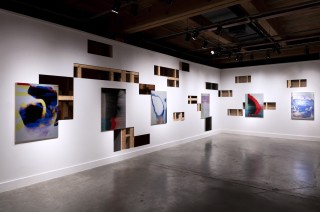
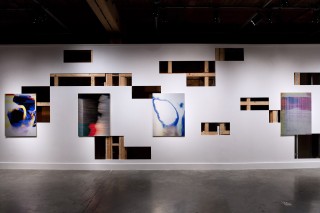


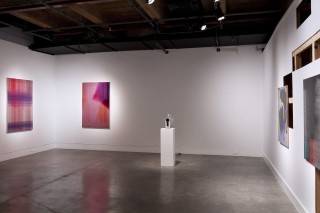
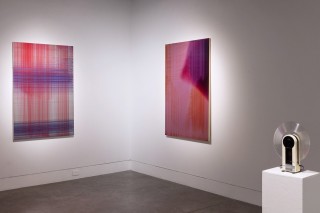
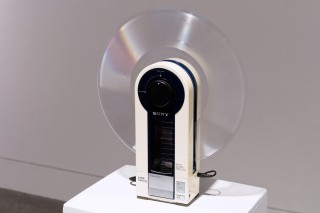
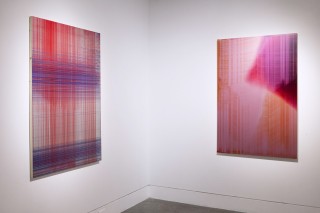
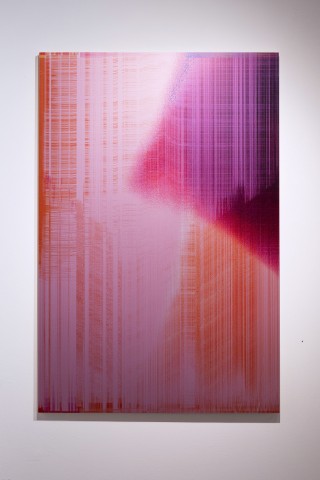
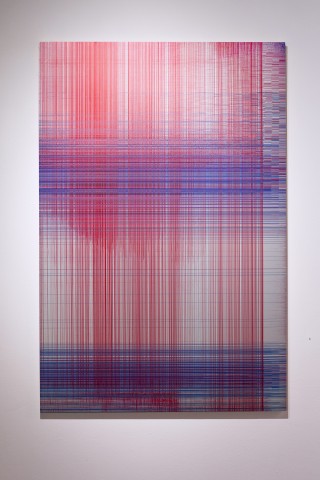

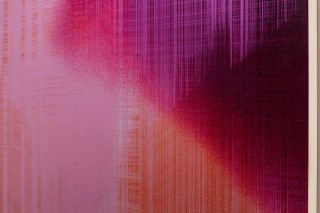

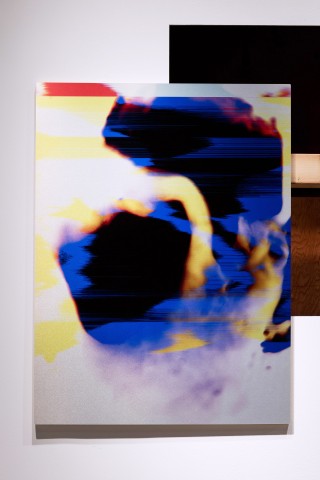
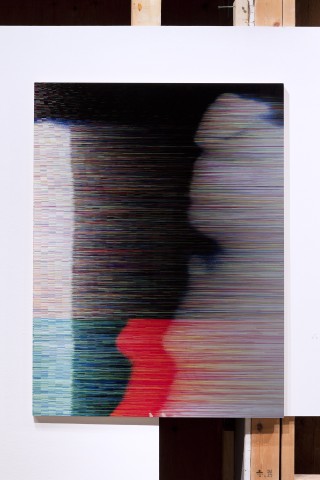

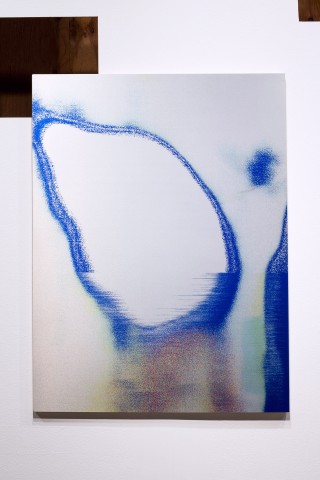
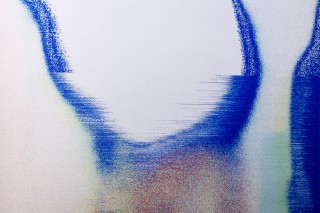
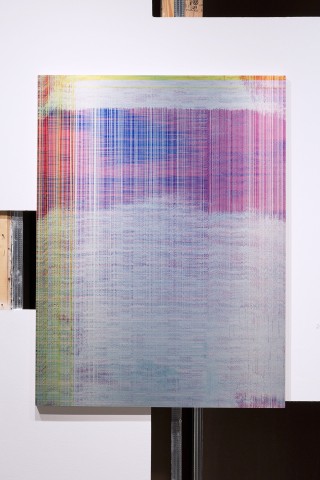
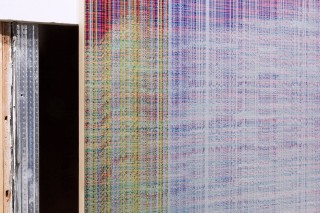
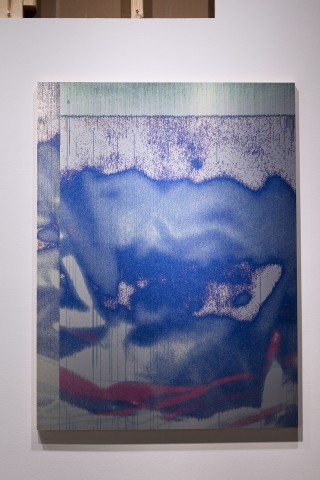
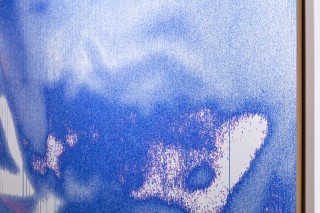

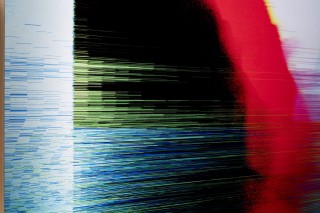
B=R=I=C=K=I=N=G is the first solo museum presentation of work by James Hoff (b. 1975, Fort Wayne, Indiana). As co-editor and publisher of Primary Information, Hoff has long explored competing forms and networks of distribution.
Hoff’s recent “virus paintings” and sound works exhibit an inevitable development of his engagement with technology, popular and political culture, and the intentional and unintentional disruptions therein. “Bricking,” the title of his exhibition, is a term used to describe the overload of an operating system when infected with malware, which renders it useless, at least, for its originally intended purposes. Hoff generates his virus paintings and sound works through a process of digital conversion, subsequent infection of his image files by a computer virus, and transference back to canvas or aluminum. To locate Hoff’s recent work in the long tradition of painting demands a reappraisal of the medium beyond its Modernist material imperatives of paint on canvas and within a digital context, in which any form, whether visual, verbal, or sonic, can be reduced to and reorganized as an arrangement of code. Most shocking, however, is that Hoff’s intentional acts of corruption yield a kind of noise that appears as phenomenal facsimile of the painterly surfaces that defined American Abstraction of the last century. And his sound works invite easy listening and recall familiar dance beats. Derived from nefarious sources, they figure innovation as invasive mutation, cloaked in the familiar vocabularies of popular culture.
Hoff’s recent “virus paintings” and sound works exhibit an inevitable development of his engagement with technology, popular and political culture, and the intentional and unintentional disruptions therein. “Bricking,” the title of his exhibition, is a term used to describe the overload of an operating system when infected with malware, which renders it useless, at least, for its originally intended purposes. Hoff generates his virus paintings and sound works through a process of digital conversion, subsequent infection of his image files by a computer virus, and transference back to canvas or aluminum. To locate Hoff’s recent work in the long tradition of painting demands a reappraisal of the medium beyond its Modernist material imperatives of paint on canvas and within a digital context, in which any form, whether visual, verbal, or sonic, can be reduced to and reorganized as an arrangement of code. Most shocking, however, is that Hoff’s intentional acts of corruption yield a kind of noise that appears as phenomenal facsimile of the painterly surfaces that defined American Abstraction of the last century. And his sound works invite easy listening and recall familiar dance beats. Derived from nefarious sources, they figure innovation as invasive mutation, cloaked in the familiar vocabularies of popular culture.
CONTEMPORARY ARTS CENTER
NEW ORLEANS
900 CAMP STREET
NEW ORLEANS, LA 70130
NEW ORLEANS
900 CAMP STREET
NEW ORLEANS, LA 70130
PRESS RELEASE
B=R=I=C=K=I=N=G
November 19, 2015–February 28, 2016

























B=R=I=C=K=I=N=G is the first solo museum presentation of work by James Hoff (b. 1975, Fort Wayne, Indiana). As co-editor and publisher of Primary Information, Hoff has long explored competing forms and networks of distribution.
Hoff’s recent “virus paintings” and sound works exhibit an inevitable development of his engagement with technology, popular and political culture, and the intentional and unintentional disruptions therein. “Bricking,” the title of his exhibition, is a term used to describe the overload of an operating system when infected with malware, which renders it useless, at least, for its originally intended purposes. Hoff generates his virus paintings and sound works through a process of digital conversion, subsequent infection of his image files by a computer virus, and transference back to canvas or aluminum. To locate Hoff’s recent work in the long tradition of painting demands a reappraisal of the medium beyond its Modernist material imperatives of paint on canvas and within a digital context, in which any form, whether visual, verbal, or sonic, can be reduced to and reorganized as an arrangement of code. Most shocking, however, is that Hoff’s intentional acts of corruption yield a kind of noise that appears as phenomenal facsimile of the painterly surfaces that defined American Abstraction of the last century. And his sound works invite easy listening and recall familiar dance beats. Derived from nefarious sources, they figure innovation as invasive mutation, cloaked in the familiar vocabularies of popular culture.
Hoff’s recent “virus paintings” and sound works exhibit an inevitable development of his engagement with technology, popular and political culture, and the intentional and unintentional disruptions therein. “Bricking,” the title of his exhibition, is a term used to describe the overload of an operating system when infected with malware, which renders it useless, at least, for its originally intended purposes. Hoff generates his virus paintings and sound works through a process of digital conversion, subsequent infection of his image files by a computer virus, and transference back to canvas or aluminum. To locate Hoff’s recent work in the long tradition of painting demands a reappraisal of the medium beyond its Modernist material imperatives of paint on canvas and within a digital context, in which any form, whether visual, verbal, or sonic, can be reduced to and reorganized as an arrangement of code. Most shocking, however, is that Hoff’s intentional acts of corruption yield a kind of noise that appears as phenomenal facsimile of the painterly surfaces that defined American Abstraction of the last century. And his sound works invite easy listening and recall familiar dance beats. Derived from nefarious sources, they figure innovation as invasive mutation, cloaked in the familiar vocabularies of popular culture.